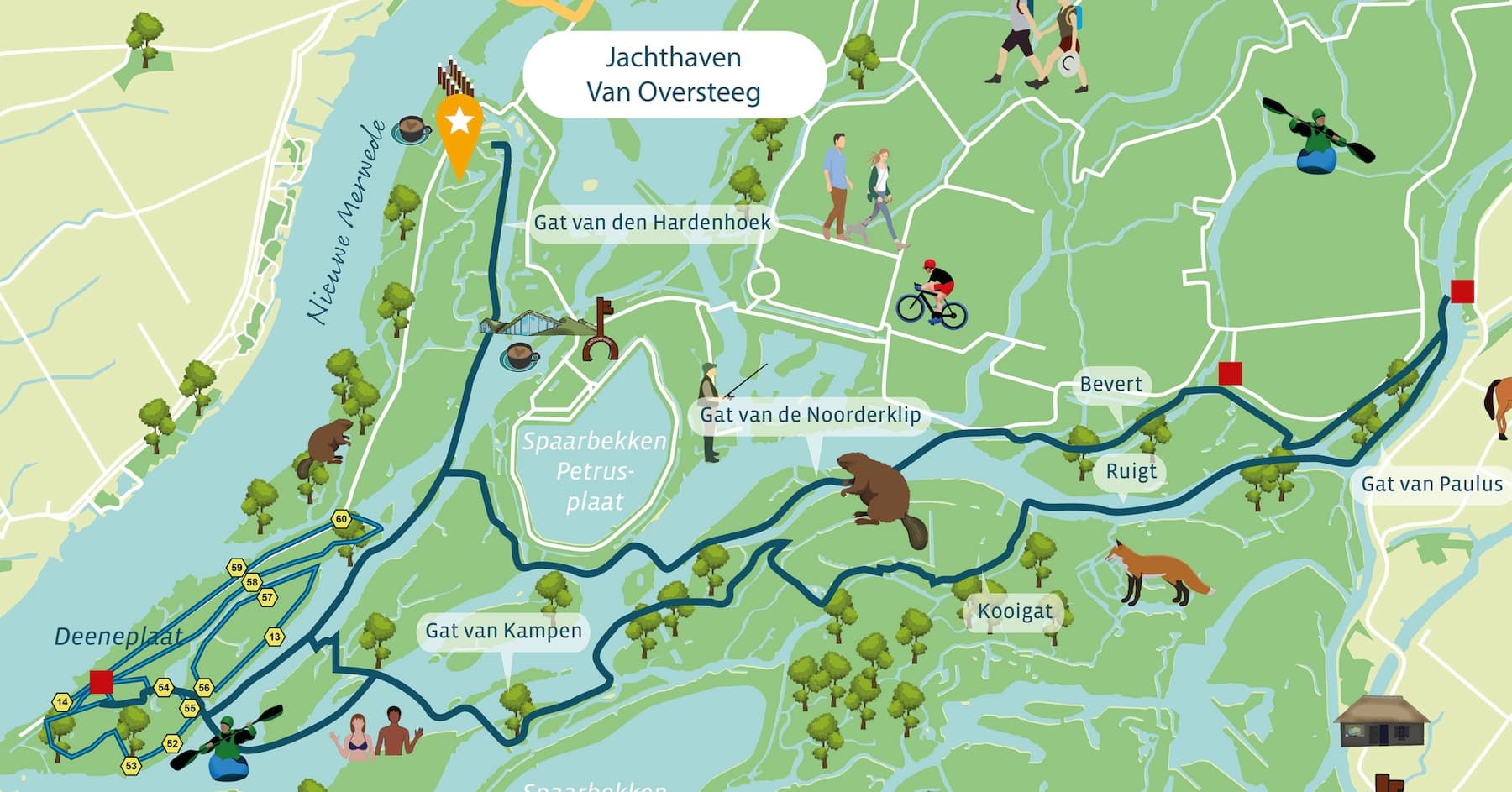Combine this tour with a walk on the Deeneplaat; an area consisting of willows, shrublands and willow floodplain forests. Characteristic of the Deeneplaat are the vletsloten. Driftwood was transported through these wide ditches with osier hooks. You also encounter valve culverts here. That may sound like a native duck species, but it is not. A valve culvert is an iron tube with a valve that allows water to flow out of the shag at low tide, but not in at high tide.
If you are looking for a route full of variety, this is a must. Because the route goes through narrow creeks and over wider waterways, you will have to deal with currents. Really a trip for the sporty canoeist. You can take a day for this route. You can stop for a picnic on the beaches and to stretch your legs a walk on the Deeneplaat is a must. It is surprisingly beautiful at any time of year, even on cold, gray days. As many as 130 species of plants grow there. Some with wonderful names, such as garlic without garlic, bird's milkweed and giant balsam. The latter is native to the Himalayas and can grow up to three meters tall. Its purple flowers bloom profusely in August.
A lot of Dane (a small species of swan) used to come here. That may explain the name Dane Plate. Nowadays, you encounter mute swans here on their way to the warm south. This is also where the rare root vole is still found. It is the only mammal in the Netherlands that lives in an isolated population. They are mostly active at night.
You can rent a canoe at Jachthaven Van Oversteeg Werkendam or at DOCKS vissershang Hank. Contact the appropriate party for availability and canoe rentals.

Activity: Hiking, Boating